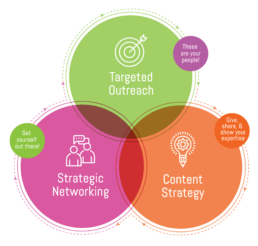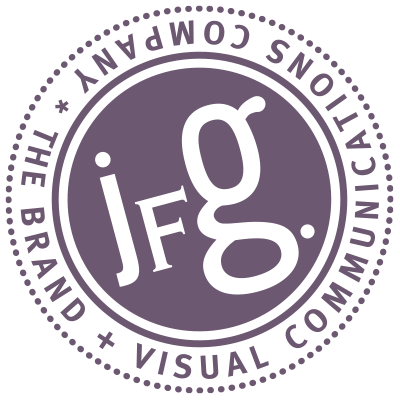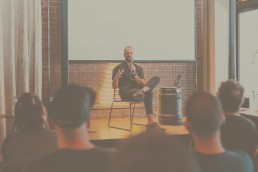Defining Your Marketing Strategy: Strategic Networking
Your marketing strategy outlines the tactics you use to communicate with your ideal clients. It is derived from your brand strategy and is one of the three key strategies every successful business needs. According to Ilise Benun of Marketing Mentor, an integrated marketing strategy consists of targeted outreach, strategic networking, and content marketing.
This post is the second of a three-part series that reviews each of these elements to help you focus your marketing efforts. Last month, I focused on targeted outreach. This month, I am focusing on strategic networking, which has looked a little different this year due to the pandemic.

What is Strategic Networking?
Strategic networking is the skill of building relationships. Relationship-building should be the most natural thing you do, but often it is one of the hardest. While you never know who might be able to introduce you to your next perfect client, networking takes significant time, energy, and effort. It is finding the ideal client, the advocate, or community who will benefit the most from your product or service. Consistent nurturing of these relationships helps in being remembered when you are needed most. Without these relationships, your business cannot thrive, much less survive.
How Do You Engage in Strategic Networking During a Global Pandemic?
In March 2020, all in-person gatherings came to a halt, and we all became used to video conference calls and working from home. Although there have always been a core group of networking events hosted online, there are even more today than there were just a few short months ago. You can find several virtual networking events on sites like Eventbrite, Meetup, LinkedIn, LunchClub, and Blitzr. Most associations are also hosting their events online.
One of the benefits of virtual networking events is that you typically get more time to connect with individuals one-on-one than at a traditional networking event. There are also fewer distractions, so conversations tend to be more focused. In some cases, the host sets the tone for the conversation and presents a clear discussion topic. In other cases, the event starts with a speaker. In either case, it pays to be prepared. It’s also important to capture the names and contact information of people you want to connect with after the event. An easy way to get started is to send a connection request on LinkedIn that reminds your contact where you met. Once you’re connected, you can set up a one-to-one phone call to continue the conversation.
Five Steps to Focus Your Virtual Networking Efforts
1. Focus on Building Relationships.
To communicate your expertise effectively to your potential ideal client, you must nurture the relationship allowing them to get to know you. As this crazy year has unfolded, we have had to adjust and create new relationship-building techniques. I’m sure you have heard of creating personas by identifying your ideal clients’ characteristics. However, have you heard of relationship-marketing personas? These personas focus on loyalty and long-term engagement. The goal of relationship marketing is to create strong, even emotional, client connections that can lead to ongoing business, free word-of-mouth promotion, and information from your ideal client that can generate leads.
From your research conducted for your targeted outreach, consult your list, and begin searching for events that might lead to introductions to personas who fit the bill to start your relationship-building process. According to Fast Company, networking isn’t about just meeting people; it is also setting up the method of sustaining these relationships. It’s not the small conversations that will make a friend and colleague for life. It’s a mixture of many things that will connect you to your ideal client.
Get started: Create relationship-marketing persona profiles of your ideal client, advocate, and community. Be descriptive of their likes, dislikes, where they hang out, what associations they are active in, what social channels they use, etc.
Related Article: Defining your Marketing Strategy Part 1: Targeted Outreach
2. Go Where Your Ideal Clients Gather.
Not all networking events are created equal. Find the ones that work for you and your ideal clients. What industry trade associations do your clients belong to? What conferences do they attend? What resources do they rely upon to do their jobs? Are they active on LinkedIn? What groups or online communities do they belong to? What are the topics being offered via Blitzr or Eventbrite? It’s essential to network with colleagues in your industry, but make sure you also network with your prospective clients.
Next steps: Join a relevant industry trade association and plan to attend a virtual conference or event of interest to your clients.
3. Understand Your Ideal Clients’ Needs.
Do your research so you understand your ideal clients’ challenges and frustrations. Go to the event to be helpful, and ask open-ended questions to encourage conversation. Connect authentically, and listen to understand. Although you may not be able to solve their problem, you might be able to make an introduction or refer them to someone who can. Be generous with your time, connections, and expertise.
Be prepared: What are the challenges your clients face regularly? Whom do you know who can help them? Understand your clients’ needs so you can demonstrate your value from the very first conversation.
4. Make the Most of the Event.
To make the most of any networking event, it helps to do a little research in advance. If possible, get a list of the people planning to attend and learn as much as you can about them. You probably won’t talk to everyone, so have a shortlist of two or three people you want to connect with. Have some questions prepared in advance. Instead of asking what they do, try asking them to tell you about a project they’re working on that they are excited about. By breaking the pattern, you gain their attention and open the door to real connection. And when you connect with someone, make sure you get their LinkedIn URL so you can follow up! Finally, if you have a hard time starting conversations with people you don’t know, ask the event organizers how you can help. By serving on a committee or volunteering at an event, other people are more likely to seek you out and initiate the conversation.
Continue the conversation: At virtual events, take notes about your fellow attendees so you can connect with them on LinkedIn. Refer back to the event, so your new contact remembers how you met, and start a dialogue. One good place to start is asking for their opinion about the main topic discussed at the event you both attended. Online conferences generally have a chat function alongside the presentation in which to converse. Conference hosts also use Slack, designating a separate channel for each of the topics, talks, and sponsors. Slack is a great place to connect and share your contact information with the other conference attendees.
5. Nurture the Relationship.
Building a relationship takes time. It’s essential to follow-up consistently and with intention. A new connection rarely results in a new client immediately. It often takes several months before your connection is ready to be a client. But by sending articles of interest, commenting on their LinkedIn posts, introducing them to other people who might be valuable connections, and chatting with them about the things going on in their lives, not just about business, you can build that relationship over time. And even if they never become a client, you now have someone in your network who might serve as a sounding board, mentor, referral source, or cheerleader.
Follow up: Stay in touch. Whether you send a handwritten note, share resources, or make a valuable introduction, continue to nurture the relationship.
Related Article: Defining your Marketing Strategy Part 3: Content Marketing
Are You Ready to be Strategic About Your Networking?
How have your networking efforts changed during this time? Have you had experiences with the virtual arena that has changed how you find your ideal clients? Have you experienced the nurturing of relationships to be a bit easier? I would love to learn about what virtual event opportunities have come your way and how you are navigating these crazy waters!
BRAND ESSENTIALS FOR THE ENTREPRENEUR
Read more about branding, strategy, and visual communications.
JFG VISUAL COMMUNICATIONS
Are you ready to elevate your business to the next level?
Regardless if you’re in the starting phase of your business or in the position to take your start-up to the next level, you don’t have to do it alone. Learn more by scheduling a complimentary 30-minute consultation and let's get started today!




